So we’ve come to the final post of this 5 part series. I know I’ve filled your head with a lot of information, and a lot of it might be hanging around loose without any connection to each other. We now know that natural hair is very complex as we looked into porosity, density, texture, elasticity and hair type. Phew!… This was like an intense Natural Hair Master Class. It was a lot! Today I will try to connect the dots between all of them.
Is Hair Typing More Important?
As I said in the first post of this series, when you step into the natural hair world you notice that much focus is given to hair typing. You can go into any natural hair blog and be guided into what is your curl type/pattern. You also have an abundant choice of YouTube videos “diagnosing” different hair types.
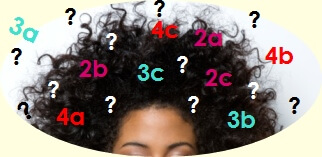
Sure! It is important to identify your hair type as you embrace your natural hair and wear it proudly. This is an important first step, no doubt! You will know that a 4a tight “S” curl type will require more work to style than a 3a loose “S” curl type. However, what happens when you identify two or three different hair types? Most people don’t have just one curl pattern. My natural hair, for instance, falls within 3a, 3b and 3c. Some people will fall within type 3 and 4, and so on… Some people will also have different hair textures. Mind boggling, isn’t it?
What if?… A Case Study
What if your hair has experienced some damage (chemical, environmental, styling), is hair typing all that important? Let’s look at my hair as a case study.
I relaxed my hair year after year, and in the last ten years, I was doing it myself at home. By then, relaxing made my scalp very sensitive, I would get scalp burns from relaxing, my scalp would flake for weeks after relaxing. In the years prior to going natural, I would just hate relaxing my hair and the periods in between each application would get longer.
When I finally stopped relaxing my hair had lost all curl pattern, it was dry, brittle, it shed, it frizzed a lot, it was thin at the ends, it didn’t hold any style and to make matters worst my staple products weren’t working anymore. My hair was a Big mess!
Connecting The Dots
I know some of you might be thinking “Yeah, but when you have relaxed hair your curl pattern changes.” Yes, this is true. But, should I have guided myself to a hair type that resembled my relaxed curls? What about all the damage my hair had suffered? Shouldn’t I have considered porosity, texture, elasticity or even density?
All the years continuously relaxing had changed my hair! Let’s consider this:
- My hair was probably more porous, with holes in its structure and unable to retain proper moisture, thus why it was so dry and brittle.
- The texture of my hair had fewer cuticle layers from all the relaxing. It was now more fragile and sensitive to chemical treatments (relaxing) and heat (unable to hold any curls or even straight style).
- The elasticity of my hair was gone! It was just limp/shapeless. I had wrongly flat ironed and stretched my hair beyond its capacity to retain any curl and style. Additionally, with holes in my hair’s structure, due to loss of protein bonds in the cortex, it had lost elasticity.
- My hair was now shedding and breaking and I didn’t have the “mane” I used to. My hair density had also changed.
My hair needed to stay away from relaxers and heat, needed regular deep conditioning to bring it back to life and protein treatments to strengthen my hair’s structure and improve porosity, elasticity, and texture. Additionally, the use of butters/oils to retain moisture in the hair shaft would have been a great addition to this rescue mission.
Don’t Forget Moisture
Can you now see how important it is to consider other factors when assessing your hair? They are all connected and they should all inform you when you style, chemically process or buy products for your hair. Nevertheless, I would say that moisture is also a very important signal of your hair’s health.
say that moisture is also a very important signal of your hair’s health.
- If you don’t moisturise your hair properly it will get dry, brittle and you will experience breakage.
- If your hair doesn’t retain any moisture (high porosity), this will damage the cuticle layer affecting its texture (dry/brittle) and consequently its cortex (protein bonds). Your hair will lose strength and elasticity looking limp and with low density.
On the other hand:
- If you over moisturise your hair, it can loose its elasticity. When you wet your hair it can stretch up to 50% of its length, and it will shrink back when it’s dry. This frequent motion will make your hair loose elasticity, much like a rubber band. In this case, you run the risk of having hygral fatigue.
- If you have low porosity, you know it will be difficult to let moisture in and this can affect all other aspects of your hair. The use of coconut oil or extra virgin olive oil which can penetrate the hair shaft will help keep it moisturised.
Final Thoughts
Can you see how complex the structure of the hair is? I have given you my hair as a case study and a few other scenarios as examples so you can “fully” understand all the intricacies of natural hair. I hope I’ve made it a bit clearer as it will take time for all to sink and make sense. Feel free to come back and read through all of the posts in this series.
Remember, your hair’s characteristics (type, porosity, texture, density and elasticity) are all important, but you should also factor in:
- Moisture
- Environmental influences
- Chemical treatments
- Styling Practices
Do you have a better understanding of your hair now? Are you able to identify some of your hair’s needs? Comment below and reach out if you need help.

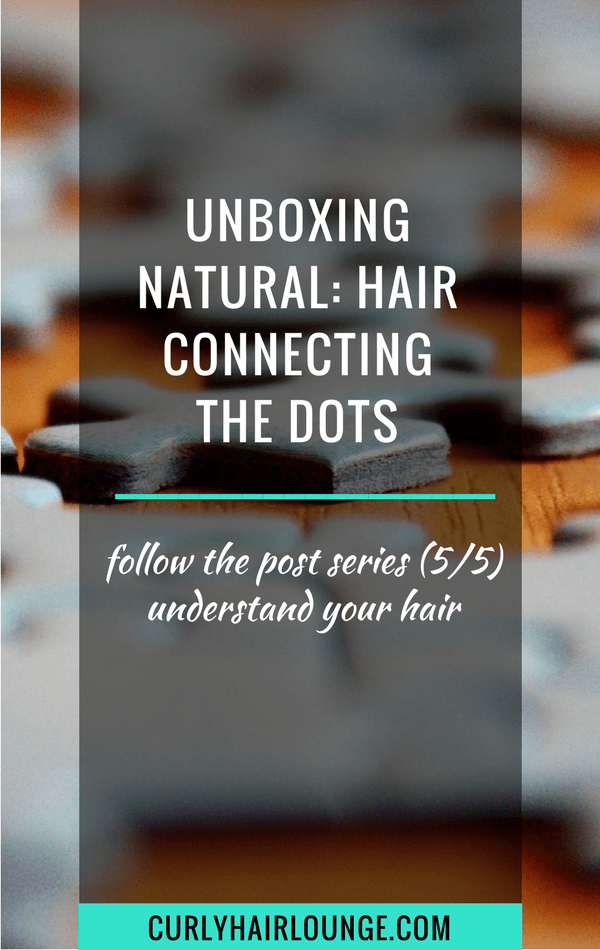
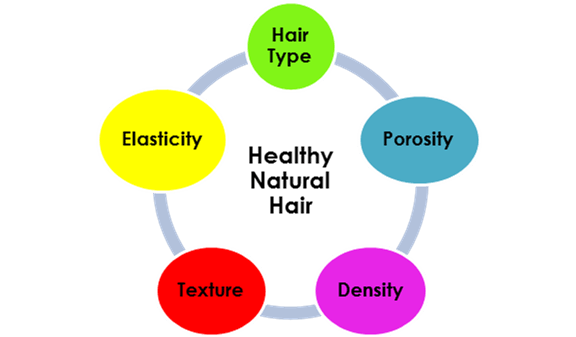
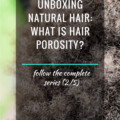
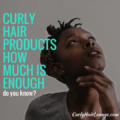

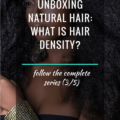

8 thoughts on “Unboxing Natural Hair – Connecting The Dots”
What a great site for sourcing out info about curly hair and care. You have a really easy site to navigate with tonnes of great info. Keep up the good work.
Thanks Jason.
What a great post. I used to perm my hair to GO curly when I was younger, and after a while had the same problem with dryness and damage. I think any longterm chemical use is going to have an effect. I think your series of posts on transitioning are going to give confidence to anyone considering letting their curly hair be curly. Good job!
Yes, I believe all chemical treatments affect your hair negatively. Ultimately, anything can damage your hair, you need to identify possible damages and know how to get around them or “troubleshoot” them.
wow this is an amazing article !!! you are bomb now I have much more understanding of the whole process of becoming natural! I am currently on my 5th month since I started the transitioning processs. So thank you so much for that. I am downloading the ebook to continue to help me 🙂 best luck to you and continued success!
Thank you so much, Saphira! I’m so glad you feel more informed and confident to continue your journey. 🙂
You truly are the most comprehensive natural hair blogger. It is truly a treasure to have found your site. Thanks so much for the break down on all things Natural Hair.
🙂 Thank you, Ruth. So glad you enjoy the info here.